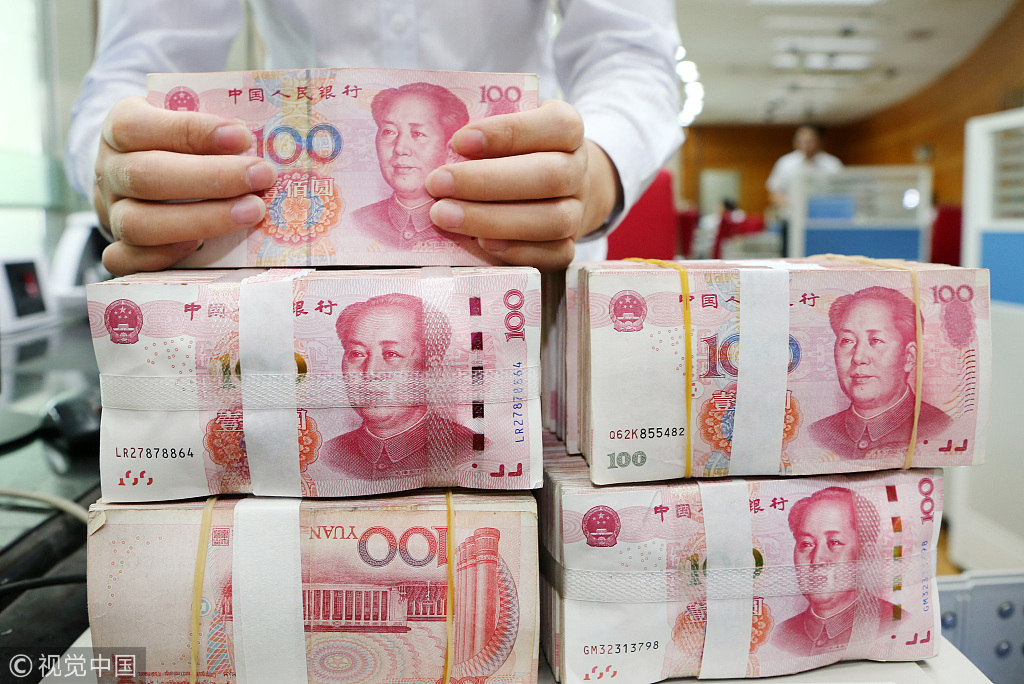Rules rein in shadow banking


Crackdown sees non-bond investments, interbank assets fall in first five months
The tightening of financial regulation in China has led to a sharp decline in shadow banking since the start of this year.
According to the China Banking and Insurance Regulatory Commission, the financial sector has continued to consolidate efforts to return to its fundamental purpose of serving the real economy.
Statistics from the regulator show that as of the end of May, interbank assets dropped by 2.6 percent year-on-year, and non-bond investments fell 7 percent.
The value of interbank wealth management products declined further by 1.2 trillion yuan ($177 billion) during the first five months of 2018, following a drop of 3.4 trillion yuan last year.
Sheng Songcheng, an adviser to the People's Bank of China, the central bank, said: "At the beginning of this year, regulators made it clear that they included regulation of risks associated with shadow banking and cross-sector financial products into the priorities of this year's crackdown on the financial market. The business of trust loans and entrusted loans has shrunk significantly since January."
The size of new trust loans and new entrusted loans dropped by 131.5 billion yuan and 179 billion yuan month-on-month in January, respectively. The growth in these two types of loans remained roughly negative for a few months thereafter, Sheng said.
The China Banking Association said in a report issued in July: "The Chinese banking sector will make a transition from high-speed growth to high-quality development. From 2018 to 2019, the banking sector will continue the development trend of last year, with positive changes taking place in its asset and liability structure. The size of interbank assets, interbank wealth management, and investment via special purpose vehicles may shrink further, and the growth in such business may slow down further.
"As the total size of banks' off-balance-sheet business will keep falling, their operation will become more sensible and standardized. With increased risk and compliance awareness, rule violations and regulatory arbitrage activities will largely decrease, and banks will become more rational in dealing with their urge for scale expansion."
On July 20, the CBIRC announced draft measures for the supervision and administration of the asset management business of commercial banks. Also on that day, the People's Bank of China announced a notice further clarifying relevant matters concerning the guidance of the financial asset management business of financial institutions. The the aim is to tighten regulatory oversight of asset management services and products to contain risks more effectively and better protect the interests of investors.
"Growth of shadow banking assets will remain constrained in 2018 due to tight regulations. These include banks' off-balance sheet wealth management products and asset management products originated by non-bank financial institutions, which were the fastest-growing shadow banking products in 2015. Trust loans and entrusted loans, the remaining growth driver in 2017, are also under regulators' spotlight," said global credit ratings agency Moody's in its Quarterly China Shadow Banking Monitor report issued in May.
As of the end of 2017, the balance of banks' wealth management products stood at 29.54 trillion yuan, according to the CBIRC.
The regulator has been strengthening supervision since 2017. As a result, the asset management business of commercial banks is showing a more steady and sustainable trend of development.
As of the end of June, the balance of nonprincipal protected wealth management products was 21 trillion yuan, falling from 22.17 trillion yuan at the end of 2017.
About 70 percent of the wealth management funds are invested in standard assets such as bonds, deposits and monetary market instruments, while about 15 percent of the funds are invested in nonstandard debt assets, according to the regulator.





































